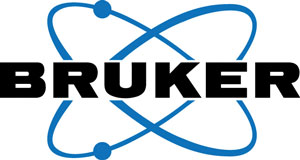The future of contamination control in pharma: from compliance to innovation
This webinar explores the benefits of accelerated microbial identification using MALDI-TOF in pharmaceutical contamination control strategies.
Microbiology laboratories’ key role in pharmaceutical manufacturing requires effective contamination control strategies and, increasingly, greater use of new technology as pharma companies pursue speed, but never at the cost of quality.
Contamination Control Strategies (CCS) offer a comprehensive, risk-based framework to prevent, detect and manage contamination in pharmaceutical environments. Mandated by regulatory bodies such as the US Food and Drug Administration (FDA) and European Medicines Agency (EMA) – and guided by organisations like the Parenteral Drug Association (PDA) , CCS plays a critical role in ensuring product integrity.
Rapid microbial identification technologies – like MALDI-TOF mass spectrometry – support CCS by enabling swift root cause analysis and guiding risk assessments, as outlined in USP chapter <1113>. Such tools allow for accurate microorganism identification within minutes, streamlining contamination response efforts. This session will break down the complexities of contamination control strategies and examine the challenges pharma manufacturers face in implementing them effectively. We’ll also highlight how emerging technologies can enhance CCS execution and help prevent costly compliance failures and patient risk.
Attendees at this webinar will gain insights into the five most common 21 CFR audit failures and learn how to proactively address them through robust contamination control strategies. The session will also spotlight innovative tools and techniques – such as rapid microbial identification – that are transforming how pharmaceutical manufacturers approach contamination risk and regulatory compliance.
Key learning points:
- Learn how global regulatory bodies define and assess CCS, and what compliance looks like in modern pharmaceutical environments
- Explore how innovations such as automation, data analytics and real-time monitoring are transforming contamination control practices
- Discuss projections for industry evolution, including advancements in rapid testing methods and their implications for quality assurance and operational efficiency.
Register now >>
SPEAKERS


He has over two decades of microbiology experience in pharmaceutical manufacturing worldwide and has built two injectable facilities from the ground up in the US.


She has been working at Nivagen Pharmaceuticals Inc. as a microbiologist since completing her PhD programme in chemistry. She has worked in both traditional chemistry and microbiology research laboratories and is now focused on pharmaceutical manufacturing.


He has been at Nivagen Pharmaceuticals Inc. as a microbiologist since returning to the US, prior to which he most recently worked on antibody development research and microbiology in Europe.
FAQs
FAQs
Is the panel discussion free?
Yes – there is no charge to watch the panel discussion, either live or on-demand.
How long will the panel discussion be?
This panel discussion will last up to an hour.
What do I need to watch this panel discussion?
All you need is a computer with an internet connection. We recommend using headphones if possible if you’re in an office environment.





